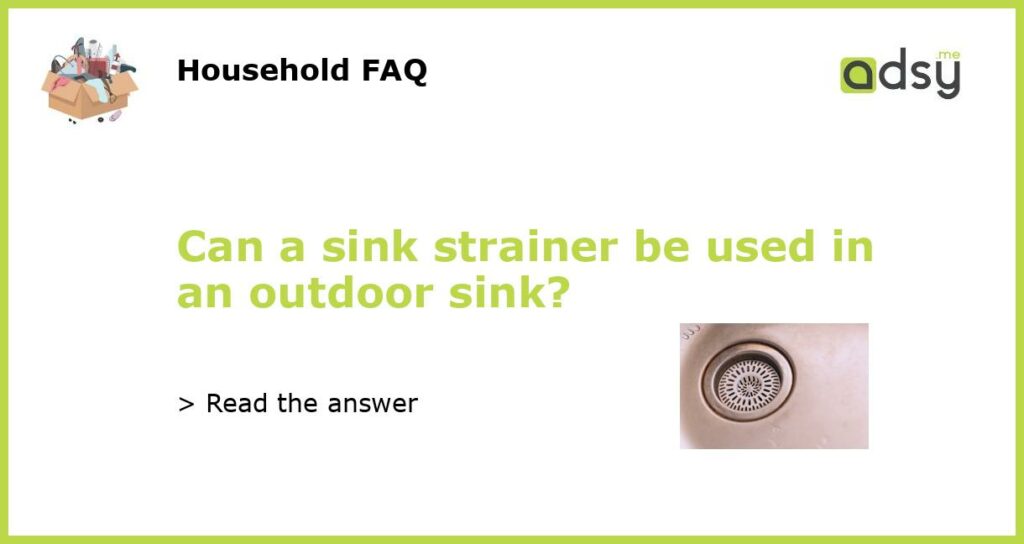Yes, a sink strainer can be used in an outdoor sink
Having an outdoor sink can be a convenient addition to your backyard or patio. It makes it much easier to clean up after outdoor activities like gardening or barbecuing. And, just like with an indoor sink, you might want to use a sink strainer to prevent debris from clogging your drain. So, can a sink strainer be used in an outdoor sink? The answer is yes. Let’s explore why and how you can use a sink strainer in your outdoor sink.
Why use a sink strainer in an outdoor sink?
Using a sink strainer in your outdoor sink can help prevent clogs and keep your drain clean. When you’re working outdoors, it’s easy for dirt, leaves, and other debris to find their way into the sink. Without a strainer, these can accumulate in your drain and cause blockages over time. Additionally, a sink strainer can catch larger food particles if you’re using your outdoor sink for cooking or cleaning up after a meal.
How to choose a sink strainer for your outdoor sink?
When choosing a sink strainer for your outdoor sink, there are a few factors to consider. First, make sure it is the right size for your sink. Most sink strainers come in standard sizes, so measure the diameter of your sink drain to ensure a proper fit. Second, consider the material of the strainer. Stainless steel is a popular choice because it is durable and resistant to rust and corrosion. Lastly, look for a strainer with fine holes or mesh to prevent small debris from passing through.
Tips for using a sink strainer in an outdoor sink
Here are some tips for using a sink strainer in your outdoor sink:
- Regularly clean the strainer: To maintain its effectiveness, clean the strainer regularly. Remove any trapped debris and rinse it under running water.
- Dispose of collected debris properly: When cleaning the strainer, make sure to dispose of the collected debris in a compost bin or trash can, depending on the type of waste.
- Check the strainer for signs of wear: Over time, the sink strainer may become worn or damaged. Check it periodically for any signs of wear and replace it if necessary.
- Consider using a disposal strainer: If your outdoor sink is equipped with a garbage disposal, you can opt for a disposal strainer. This type of strainer has larger holes to allow food waste to pass through and be processed by the disposal unit.
- Remove the strainer when not in use: If you’re not using your outdoor sink regularly or during the winter months, it’s a good idea to remove the strainer to prevent it from getting clogged or damaged.
In conclusion
Using a sink strainer in an outdoor sink is a practical way to prevent clogs and keep your drain clean. It can help catch debris and food particles, ensuring that they don’t go down the drain and cause problems. When choosing a sink strainer, consider the size and material that will work best for your outdoor sink. And don’t forget to clean and maintain the strainer regularly to prolong its lifespan. With a sink strainer in place, you can enjoy the convenience of an outdoor sink without worrying about drain blockages!






